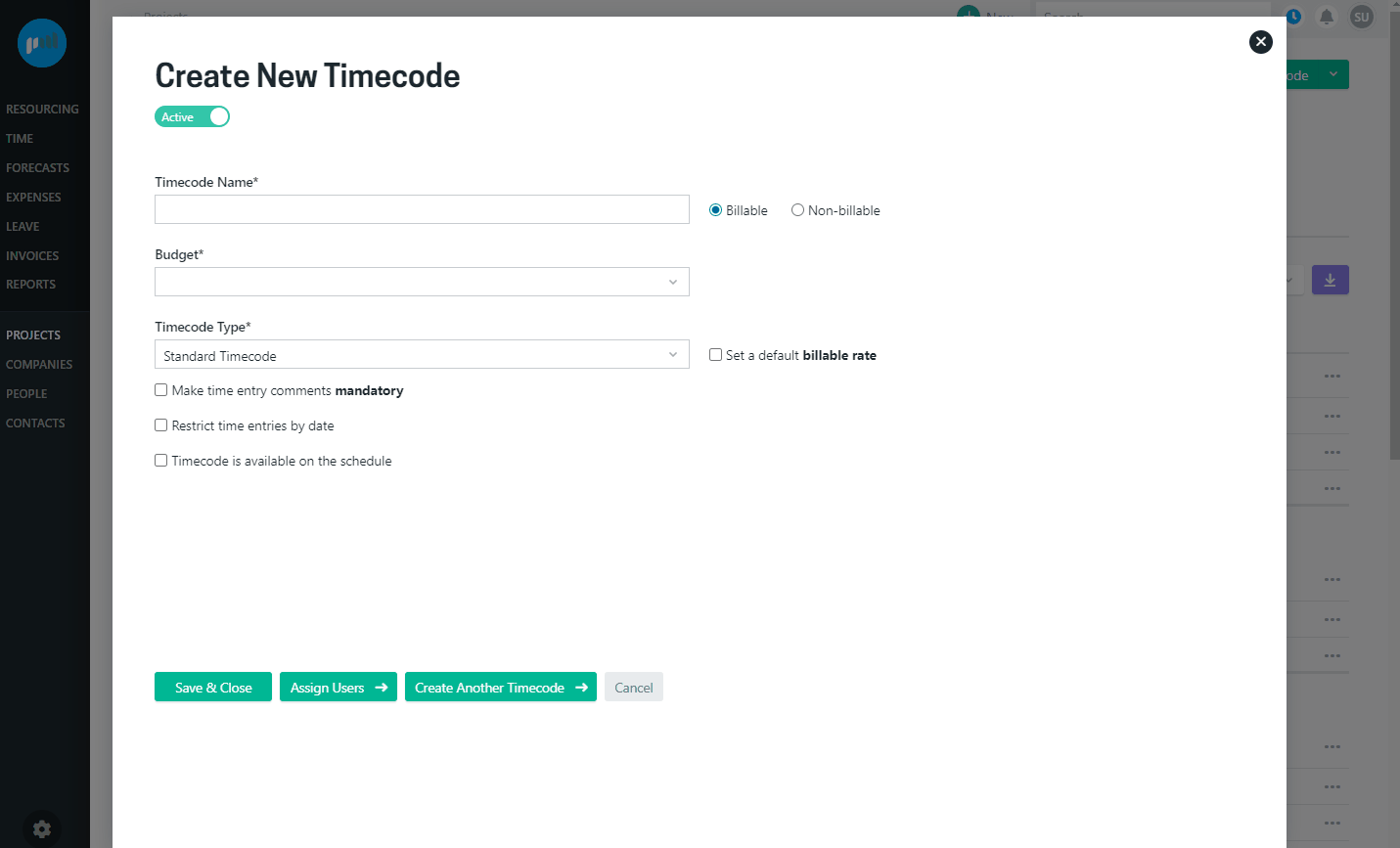Using non-billable timecodes within a billable project allows certain effort to be excluded from invoicing and utilisation calculations.
Projectworks has two different types of projects; billable and non-billable. Generally speaking, all work conducted on a billable project would be considered billable, However this isn’t always the case.
When adding a timecode to a billable project the timecode will be defaulted to billable and billable rates will be used (based on the billable rate rules of the project). A timecode can be changed to be non-billable, and by default will have a burn rate of $0 applied.
All timecodes on non-billable projects are set to non-billable.

The difference between a billable and a non-billable timecode?
For people doing their timesheet there is no difference with how time is recorded. Within a project the main difference between billable and non-billable timecodes is:
-
Time recorded on non-billable timecodes will not be available for invoicing
-
Time recorded on non-billable timecodes will not prevent a project from being archived
-
Use a billable timecode to make all time recorded available for invoicing
- Use a billable timecode to treat all time as effective for utilisation calculations
-
Use a non-billable timecode to exclude time worked from invoicing and preventing a project being archived
- Use a non-billable timecode to exclude effort from utilisation calculations
Outside of the project, whether a timecode is set as billable or non-billable can have an impact on how utilisation is calculated. Your company can choose to include or exclude time logged on non-billable timecodes from utilisation calculations so we recommend talking with your managers so you understand the impact of using non billable timecodes.
Refer to the Utilisation target article for more information
Creating a non-billable timecode
If a project is billable, timecodes will default to billable but can be changed to non-billable. You may like to do this to track time that you don’t expect the client to pay for like training, team building activities, etc. There may also be a certain activity that is to specifically be excluded from utilisation calculations. An example may be remedial work that is needed to correct issues.
When making a timecode non-billable it will be set to have a default burn rate of $0. All people added to the timecode will automatically be assigned the default burn rate of $0.

Setting a burn rate greater than $0 will mean time recorded will be included in the burn of the project and impact the budget.
Regardless of the burn rate set, time recorded on non-billable timecodes will not be available for invoicing.
Changing a timecode from billable to non-billable
Timecodes can be changed from billable to non-billable as long as no time entries have been included on invoices. The option to change will be disabled if the timecode is unable to be changed.
Using a billable rate on a non-billable timecode
The main reason to use a billable rate on a non-billable timecode is to show the impact on the budget. Even though the time won’t be available for invoicing it will factored into the budget burn.
-
User a $0 rate on a timecode to not impact the project budget by recording time that has no value
-
Use a billable rate greater than $0 to show the value of all time recorded
Isn’t using a $0 billable rate on a billable timecode the same as making a timecode non-billable?
From a customer perspective it probably is as time recorded at $0 will not impact the budget or the amount they will be invoiced. You might want to consider the following points before using a $0 billable rate.
-
The customers budget won't be impacted by worked recorded at $0 rates
-
It allows time recorded to be included in utilisation calculations (if your company only treated billable timecodes as effective utilisation)
-
Using this option is a good way to record work within a project so you can see the full extent of the effort required to deliver the project which helps with margin reporting
-
A potential downside is you can't see the project is over budget as not all the hours are recorded at a billable rate.
-
All time recorded to billable timecodes need to be associated to invoices for the project to be archived (even if the billable value is $0)
